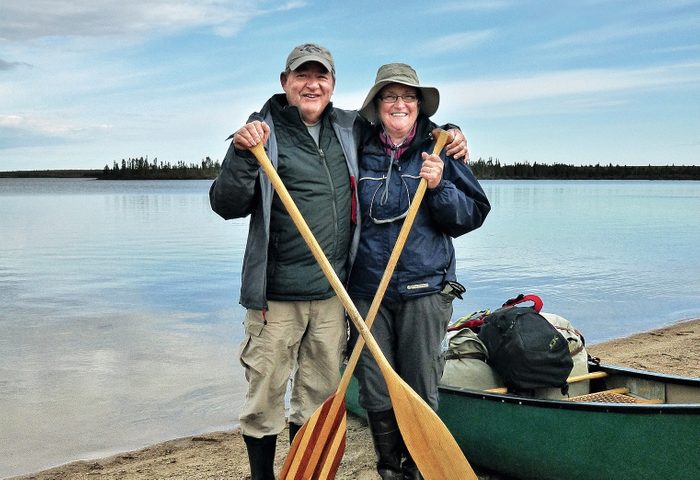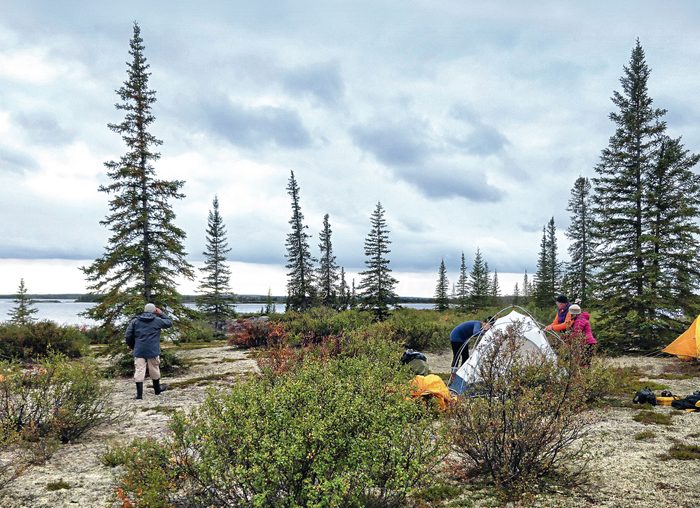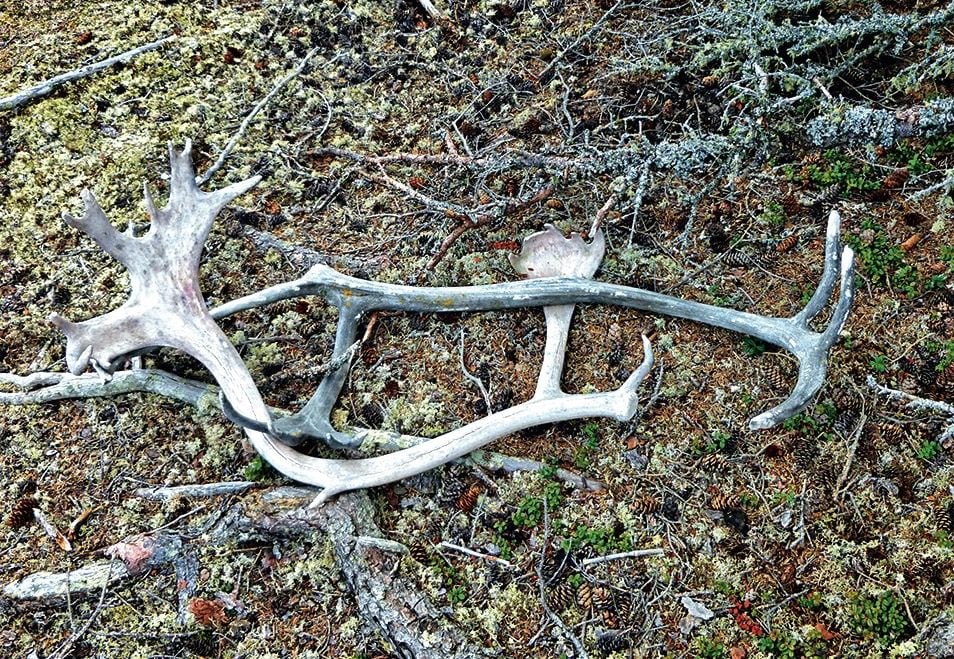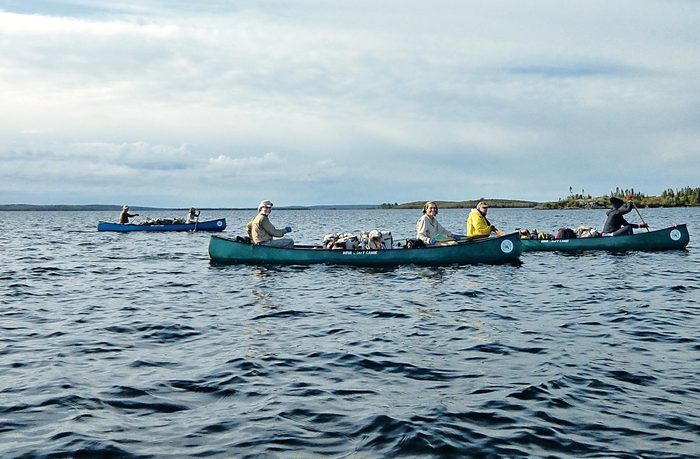
Exploring the Barren Lands by Canoe
David, my companion in all things important for 40 years, had an unfulfilled yearning to canoe the Arctic waters explored by the likes of Samuel Hearne in 1771. I had no such interest. Agreeing to accompany him was one of the better decisions I have made.
The area we flew into with our guide, outfitter and bannock baker extraordinaire, the late Alex Hall, is a spectacular roadless wilderness that is yet untouched by mineral and petroleum exploration. We canoed nameless rivers; unbelievable but true that a number of rivers and lakes we travelled have no name. We tented on numerous sandy beaches scattered with caribou antlers. If you like the beaches of Prince Edward Island, you will love the beaches of the central Arctic. Our group has been sworn to secrecy about the precise location of this expedition. Ever since Alex Hall, with his company Canoe Arctic Inc., started flying enthusiasts into this area from Fort Smith in the 1970s, he never met another traveller.

The Adventure of a Lifetime
Including Alex, our group consisted of ten adults in five canoes. Lucy from Boston was an outlier age-wise at 31, while the average age for the remainder of us was 65. The journey commenced in Fort Smith, N.W.T., where all the gear and my fellow Canoe Arctic adventurers were loaded on three planes bound for our first night of beach-front camping.
Alex was the boss and he determined, based on weather factors, if the day was to be spent canoeing or trekking the vast eskers to view wildlife. Over 11 days, our group paddled 100 kilometres.
Alex would host a number of groups every summer. Guests early in the season would be awed with sightings of muskoxen and migrating caribou. Not so awesome at this time are also hordes of pesky insects.
Check out the best wildlife experience in every province.

Autumn in the Barren Lands
The beasts and bugs were mostly absent during our excursion dates from August 27 to September 6; however, the fall season presented other unique gifts. Autumn happens quickly in the north and the beauty of each day was breathtaking. The land was turning crimson with dwarf birch and bearberry among other vegetation. This was in dramatic contrast to the silver lichen ground cover. If you love the fall colours of New Brunswick, the Arctic will leave you weak in the knees.
Comparable was the exquisiteness of the night. Countless stars illuminated an endless sky and the aurora borealis is downright dreamy. One night, a red moon was reflected twice in the lake. While unsure of the physics involved, I am sure the image existed, as David saw it, too.
There were other surprises. The water was so pure that you could dip your container into the lake and simply drink. It was so quiet that when the planes arrived to pick up our group, I had to cover my ears. I’m positive they were less loud the week before. There were no bright screens, smart phones, electrical towers or aircraft overhead. Simply a vast expanse of land, small trees hugging the shoreline and lakes upon lakes as far as the eye could see. It is an unreservedly lovely place.
After several centuries, explorer Samuel Hearne might conclude that not much has changed.
Don’t miss this awe-inspiring gallery of Northern Lights photography.

Planning Your Own Visit to the Barren Lands
If you believe that this type of tenting and canoeing is beyond your physical capacity, I can identify with you. Years ago, I did some tenting but always in a civilized campground with bathrooms and rain shelters adjacent to designated park. Then last year, David and I enrolled in a day of canoeing lessons. Still, knowing Alex had emergency contacts—I believed I would be the first shipped back to Fort Smith!
If you are considering a visit to this majestic Arctic corridor, don’t put it off. Visiting the Canadian Barren Lands is an experience that is seen with the eye, felt in the heart, and permanently settles in the soul.
Fired up for further explorations of the Great White North? Check out 10 national parks every Canadian needs to visit.